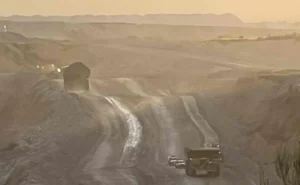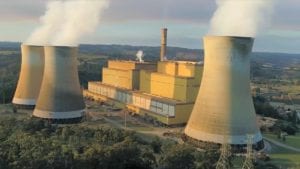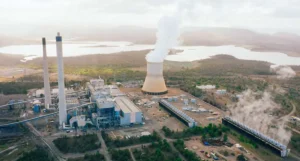Electricity output from coal and gas hit a record low in the final three months of 2023 as renewables grow but interconnector woes continue to limit advantages.
Record low coal and gas-fired generation forced wholesale electricity prices lower in the closing months of 2023, as every region of the country notched up a new solar output record.
While prices are sharply lower than the peaks of two years ago, Australia remains vulnerable to price spikes should heat waves strike during January to March, the Australian Energy Regulator (AER) said on Wednesday.
In a quarterly update, the regulator also warned it would “take time” for power bills to reflect recent lower costs.
Combined, wind and solar farms reached a record high of more than a quarter (26 per cent) of generation output in the national electricity market (NEM) from October to December, up from a record 23 per cent a year earlier.
Average annual wholesale electricity prices in the NEM dropped by between 44 per cent and 64 per cent and average annual east coast gas market spot prices fell by 43 per cent in 2023.
“The proportion of electricity output sourced from coal and gas fell to a record low of 66 per cent,” AER board member Jarrod Ball said.
“Although relatively little new (large-scale) generation entered the market, a significant increase in new entry is currently scheduled for 2024,” he added.
Wholesale electricity prices fell in NSW, Victoria and South Australia in the last three months of 2023, but increased in Queensland and Tasmania compared to the previous quarter.
Victoria was the cheapest region in the December quarter, with electricity prices averaging $34 per megawatt hour, while Queensland was the most expensive at $79 per MWh.
However, the price gap between daytime and evening continued to widen with evening peak prices averaging well over $100 per MWh in Queensland, NSW and South Australia.
Interconnector constraints continued to be a factor in high price events recorded during the quarter, AER revealed.
High-voltage interconnectors are meant to allow states to import cheaper generation from outside their borders.
Queensland and Victoria have tended to be net exporters, providing surplus capacity to NSW where cheap capacity is often lacking.
Australia is racing to connect new and more geographically dispersed renewable energy zones as the country moves on from last-century’s network of large coal-fired power stations.
On November 9, a planned network outage limited imports into SA. Severe weather on December 8 in SA, and on December 28 and 29 in Queensland, led to electricity imports being restricted to protect system security.
Residential and commercial gas demand was at its lowest in a decade for that time of year, and demand from gas-fired generators dropped by 27 per cent from the previous three months.
The regulator said this low demand helped put downward pressure on domestic prices, offsetting potential upward pressure from high LNG export volumes or constraints from ongoing pipeline maintenance in VIC.
Gas prices on the east coast spot market increased slightly on the previous quarter to $10.83 per gigajoule, and southern gas storage remains at record high levels.
AER QUARTERLY UPDATE ON WHOLESALE ENERGY PRICES:
* Electricity generation sourced from fossil fuels fell to a record low of two-thirds during October to December 2023.
* Wind and solar reached a record high share at more than a quarter (26 per cent) amid the energy transition.
* Government price caps, fewer coal supply issues, milder winter weather and an increase in cheap wind and solar contributed
* But lower wholesale prices are yet to flow through to contracts with retailers and then, eventually, to consumers
* Large-scale renewable energy from solar farms is setting the price more often, particularly in Queensland
* Record rooftop solar output drove record low demand for grid-sourced power in Victoria and South Australia
* Low demand contributes to downward pressure on prices, in some cases even contributing to negative prices
* Negative prices mean generators – coal-fired plants and solar and wind farms – end up paying to provide energy
* A record number of negative prices occurred, most frequently in VIC and SA, typically during the daytime abundance of household rooftop solar
* When minimum demand falls to very low levels, the Australian Energy Market Operator (AEMO) may intervene to keep the system safe
* Further uptake of rooftop solar may increase so-called minimum demand pressure in the future
* Electrification, price incentives to shift customer usage to the daytime – such as “solar soaker” tariffs – and uptake of batteries could ease the pressure on the network.
Source: AAP










